These cars are generally held to be some of the prettiest sedans ever designed. However, they do have some problems.
The XJ6 was the standard model. In some years and makets Jaguar offered an XJ6L with more floor space for rear seat passengers. A premium Vanden Plas version was also offered on later cars. The Vanden Plas was set apart by special color combinations, full leather interior (the base XJ6 had leather seat faces and vinyl elsewhere), center console in the rear, and plush overlay carpets. The XJ6 and Vanden Plas were mechanically identical.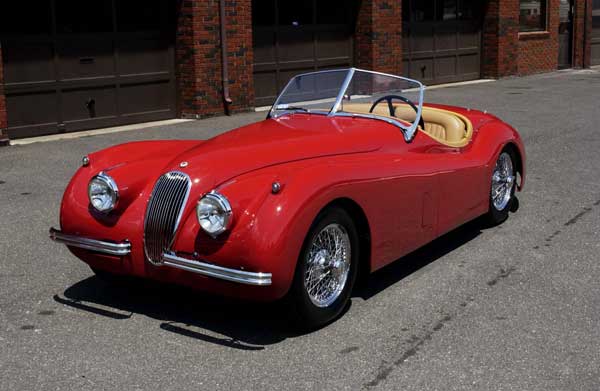
A 12-cylinder version of this car was sold outside the United States as the Daimler Double Six. The XJ12 model was also sold here some years in small quantity. Maintenance costs are considerably higher on the 12 cylinder models.
JE Robison Service has complete repair facilities for these cars. In addition to mechanical service we offer restoration of interior woodwork and leather.
These cars, successors to the XKE series, are very affordable for the performance they deliver. The XJ-S coupe was built with virtually unchanged body styling from 1974 to 1996 — a 22-year production run.
In 1987 Jaguar contracted with Hess & Eisenhardt to make a convertible. These 1987 and 1988 units were troublesome when new and parts are now very hard to get. I suggest you avoid these convertibles if possible. For 1989 Jaguar took convertible manufacture in house and quality improved.
In 1992 the styling of the tail lamps was changed, and in 1993 the 6-cylinder engine became standard in the United States.
JE Robison Service has complete repair facilities for these cars. In addition to mechanical service we offer restoration of interior woodwork and leather.
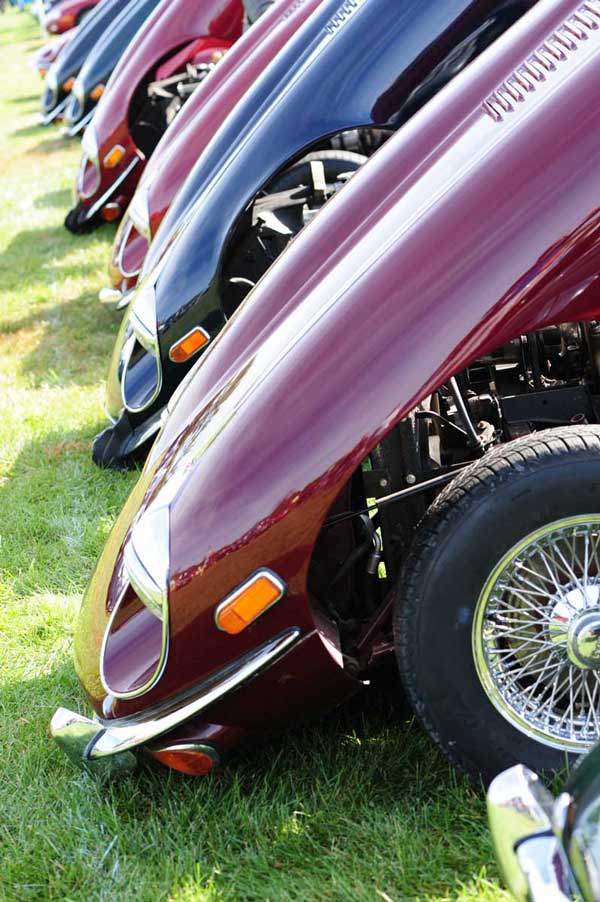
These cars shared the chassis of the first XJ40 cars but Ford’s influence (Ford bought Jaguar in 1990) was beginning to appear in the form of sharply increased quality.
The 1993 and 1994 cars are head and shoulders above previous XJ40 models in terms of production quality.
The tensioners for the cam-to-cam timing chains come apart. The plastic face that touches the chain comes off and the metal base of the tensioner rides on the chain. The car will perform fine until one day the chain will snag on the broken tensioner it will derail, and the valves will bend.
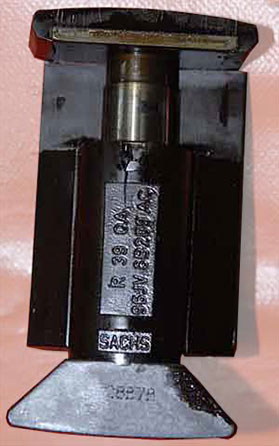 |
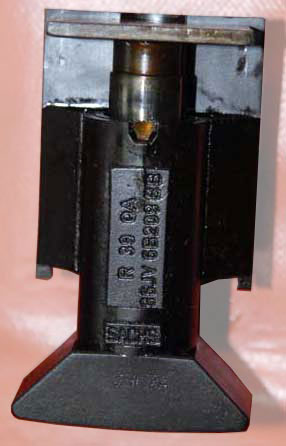 |
top left: cracked old tensioner, top right: missing tensioner. | |
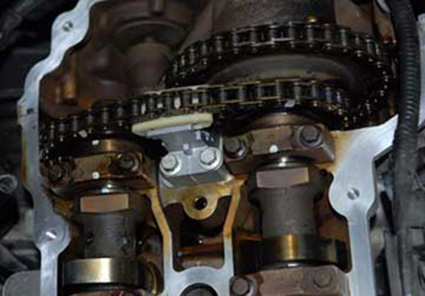 | |
In addition, when the tensioner fails the pieces may tangle in the guides for the main timing chain.
We suggest taking the cam covers off your engine to inspect the tensioners. Inspection takes a few hours, and it may save you thousands in engine repairs. If your tensioners are bad we suggest fitting the latest style.
Replacement of the tensioners with new style parts is an 8-hour job. Replacement of the main chain and guide rails is a much bigger job, generally 20+ hours of additional work. Repair of bent valves is a 40+ hour job. So it's clearly to your benefit to change the tensioners before they come apart and damage the valves or the main timing chains.
The early V8 engines used a process called Nickasil to make the cylinder bores. Nickasil is essentially a glass (silica) liner in the aluminum bores. It's very hard and the pistons can run on it for hundreds of thousands of miles without any significant wear.
However, if the engine is allowed to overheat the Nickasil can sustain damage and fail. If this happens your engine will wear out within a few thousand miles, losing compression and becoming hard to start.
The water pumps in Jaguar v8 engines have plastic impellers. These impellers can come apart, causing the engine to overheat because the water pump no longer does anything. This can be a tricky problem to diagnose because there is nothing visible from the outside. You have to remove the water pump to see what’s wrong. A new pump is the cure, and you have to make sure you flush all chunks of the old pump out of the block to keep the new pump from suffering the same fate.
Another problem we are seeing on 1997-1999 cars is deterioration of the hoses. In some cases the snap fittings that hold the small hoses in place break, allowing the hose to come loose and spray coolant. We suggest fitting all new hoses if this happens to you.
The convertible tops on XK8 models tend to become sluggish and sometimes jam partway up. If this happens to you refer to your owners manual — it shows how to manually lock the top in place.
The problem is caused by the hydraulic fluid used to move the top. Usually it’s thin but in these tops it turns to a jelly that can’t be pumped through the pipes. We flush the out the old “chunky” fluid and install new synthetic hydraulic fluid. Repair takes a few hours and outside of the fluid no parts are needed in most cases.
Founder John Robison has been around cars for 40+ years. He has served as a technical consultant for the BMW, Mercedes, Porsche, Ferrari, Rolls-Royce and Bentley car clubs. He has served as a track inspector for BMW, Ferrari, and Porsche club events. He is also a concours judge for the American Rolls-Royce and Bentley club.
John serves as a technical consultant to attorney and insurance companies in regard to automotive forensics, particularly with respect to the cars we specialize in and Bosch systems. John has broad experience investigating and explaining mechanical failures of all kinds.
J E Robison Service Co Inc of Springfield, Massachusetts, is an independent business that specializes in the sale and service of used Jaguar motorcars. We are not an authorized Jaguar dealership, we do not sell brand new Jaguar motorcars and we are not otherwise affiliated with, originating from, sponsored by, or approved by Jaguar Land Rover North America, LLC in any way.